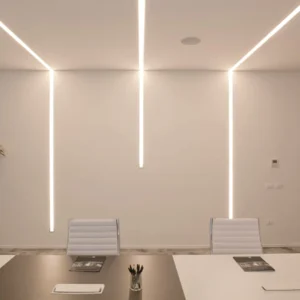Lighting Egypt: Illuminating the Ancient and Modern Marvels
Introduction
When you think of Egypt, what comes to mind? The towering pyramids, the mystical Sphinx, or perhaps the ancient hieroglyphs etched into stone? Yet, one aspect that often goes unnoticed is the evolution of lighting in Egypt. From the flickering flames of oil lamps in ancient times to the bright LED lights illuminating modern streets, lighting has played a crucial role in shaping Egypt’s history and culture.
 Historical Significance of Lighting in Egypt
Historical Significance of Lighting in Egypt
Lighting in Ancient Egypt
In ancient Egypt, lighting wasn’t just about practicality; it was imbued with profound symbolism. The Egyptians used oil lamps and candles, primarily made from reeds soaked in fat, to light their homes and temples. These lights were not only sources of illumination but also held religious significance, believed to guide the souls of the deceased in the afterlife.
Symbolism and Rituals Associated with Lighting
Lighting played a pivotal role in various rituals and ceremonies. The lighting of lamps during religious ceremonies was seen as a way to connect with the divine. Temples were often illuminated by rows of oil lamps, creating a sacred ambiance that enhanced the spiritual experience.
Lighting Techniques and Innovations
Oil Lamps and Candles
The earliest forms of lighting in Egypt were simple oil lamps and candles. These were efficient and easy to make, using locally available materials. The design of these lamps evolved over time, becoming more sophisticated and decorative.
Introduction of Gas Lighting
The 19th century brought significant changes with the introduction of gas lighting. This innovation marked a leap from the dim and flickering flames of oil lamps to a more consistent and brighter source of light. Gas lighting became popular in urban areas, revolutionizing public and private spaces.
Electric Lighting in the Modern Era
The advent of electricity in the early 20th century further transformed Egypt’s lighting landscape. Electric lights replaced gas lamps, bringing brighter, cleaner, and safer illumination to homes, streets, and public buildings. This shift marked the beginning of Egypt’s modern lighting era.
Architectural Lighting in Ancient Egypt
Lighting in Pyramids and Temples
Ancient Egyptian architecture made ingenious use of lighting. The pyramids, for instance, were designed to align with celestial bodies, allowing natural light to enter through specific openings. Temples, too, were constructed to maximize the use of natural light, creating dramatic effects that highlighted the grandeur of the structures.
Use of Natural Light in Ancient Structures
Natural light was a key element in ancient Egyptian architecture. The strategic placement of windows and openings allowed sunlight to penetrate deep into the interiors of buildings, reducing the need for artificial lighting and enhancing the overall aesthetic.
Modern Lighting in Egyptian Architecture
Lighting in Contemporary Buildings
Modern Egyptian architecture continues to blend traditional and contemporary lighting techniques. Skyscrapers and modern buildings are often adorned with sophisticated lighting systems that highlight their architectural features. The use of LEDs and other advanced technologies has enabled more creative and efficient lighting designs.
Integration of Traditional and Modern Lighting Techniques
In many contemporary buildings, there is a conscious effort to integrate traditional lighting methods with modern technology. This fusion creates a unique ambiance that pays homage to Egypt’s rich heritage while embracing the conveniences of modern lighting solutions.
Street Lighting in Egypt
Evolution of Street Lighting
Street lighting in Egypt has come a long way from the days of oil lamps. The introduction of gas and electric streetlights transformed urban landscapes, making streets safer and more navigable after dark. Today, modern LED streetlights are common, providing efficient and eco-friendly illumination.
Current Street Lighting Systems
Modern street lighting systems in Egypt are designed to be energy-efficient and sustainable. Many cities have adopted smart lighting solutions that adjust brightness based on the time of day and traffic conditions, reducing energy consumption and minimizing light pollution.
Lighting Festivals and Celebrations
Religious and Cultural Festivals Involving Lighting
Lighting is an integral part of many Egyptian festivals and celebrations. During Ramadan, for instance, streets and homes are adorned with colorful lanterns called “fanous.” These lanterns create a festive atmosphere and symbolize hope and joy.
Modern Lighting Festivals
In recent years, modern lighting festivals have become popular in Egypt. These events showcase innovative lighting designs and installations, attracting visitors from around the world. Such festivals highlight the creative potential of lighting as an art form and its role in urban culture.
Lighting in Egyptian Homes
Traditional Home Lighting Methods
Traditional Egyptian homes relied on oil lamps and candles for lighting. These simple yet effective methods provided the necessary illumination while creating a warm and cozy atmosphere.
Modern Home Lighting Trends
Today, Egyptian homes feature a blend of traditional and modern lighting. LED lights, smart bulbs, and decorative fixtures are commonly used to enhance the aesthetic appeal and functionality of living spaces. The trend towards energy-efficient and sustainable lighting solutions is also gaining traction.
Commercial and Industrial Lighting in Egypt
Lighting in Commercial Spaces
In commercial spaces, lighting plays a crucial role in creating an inviting and productive environment. Retail stores, offices, and restaurants use a combination of ambient, task, and accent lighting to enhance the customer experience and boost employee productivity.
Industrial Lighting Standards and Practices
Industrial lighting in Egypt adheres to strict standards to ensure safety and efficiency. Factories and warehouses use high-intensity discharge (HID) lamps, LEDs, and other advanced lighting technologies to provide adequate illumination for various industrial activities.
Environmental Impact of Lighting
Sustainability Concerns
The environmental impact of lighting is a growing concern in Egypt. Traditional lighting methods often rely on non-renewable resources and contribute to pollution. There is a growing awareness of the need for sustainable lighting solutions that minimize environmental impact.
Efforts Towards Eco-Friendly Lighting Solutions
To address these concerns, there are efforts to promote eco-friendly lighting solutions. The use of LED lights, solar-powered streetlights, and smart lighting systems are examples of initiatives aimed at reducing energy consumption and promoting sustainability.
Technological Advancements in Lighting
LED Technology
LED technology has revolutionized the lighting industry in Egypt. LEDs are energy-efficient, long-lasting, and versatile, making them an ideal choice for a wide range of applications, from residential to commercial and industrial lighting.
Smart Lighting Systems
Smart lighting systems are becoming increasingly popular in Egypt. These systems allow users to control lighting remotely, adjust brightness and color, and set schedules, providing greater convenience and energy savings.
Art and Lighting
Use of Lighting in Egyptian Art
Lighting plays a significant role in Egyptian art. Artists use light and shadow to create depth and dimension in their works. In museums and galleries, lighting is carefully designed to enhance the visual impact of exhibits and protect delicate artifacts.
Lighting in Museums and Galleries
Museums and galleries in Egypt employ advanced lighting techniques to showcase their collections. Controlled lighting environments help preserve historical artifacts while providing visitors with an engaging and immersive experience.
Lighting Challenges in Egypt
Infrastructure Issues
Despite advancements, Egypt faces challenges in its lighting infrastructure. Aging equipment, power outages, and maintenance issues are common problems that need to be addressed to ensure reliable and efficient lighting.
Solutions and Innovations
To overcome these challenges, there are ongoing efforts to upgrade lighting infrastructure. Investments in smart grid technology, renewable energy sources, and modern lighting solutions are key strategies to enhance Egypt’s lighting systems.
Future of Lighting in Egypt
Emerging Trends and Technologies
The future of lighting in Egypt looks promising, with several emerging trends and technologies on the horizon. Innovations such as OLEDs, quantum dots, and advanced smart lighting systems are expected to shape the future of lighting in the country.
Predictions for the Future
As technology continues to evolve, lighting in Egypt will become more efficient, sustainable, and integrated with other smart systems. The focus will be on creating lighting solutions that not only illuminate spaces but also enhance the overall quality of life.
Conclusion
Lighting has been an essential part of Egypt’s history and continues to play a vital role in its modern development. From the ancient oil lamps that lit up the temples to the advanced LED and smart lighting systems of today, the evolution of lighting in Egypt is a testament to human ingenuity and the quest for better illumination. As the country moves towards a brighter and more sustainable future, the significance of lighting in shaping Egypt’s cultural and technological landscape remains as important as ever.
FAQs
- What were the primary sources of lighting in ancient Egypt?
- The primary sources of lighting in ancient Egypt were oil lamps and candles made from reeds soaked in fat.
- How has modern technology influenced lighting in Egypt?
- Modern technology has introduced advanced lighting solutions such as LEDs, smart lighting systems, and energy-efficient streetlights, revolutionizing how spaces are illuminated in Egypt.
- What role does lighting play in Egyptian festivals?
- Lighting is a crucial element in Egyptian festivals, symbolizing hope, joy, and celebration. Traditional lanterns and modern light displays are commonly used during religious and cultural events.
- What are the challenges faced by Egypt in terms of lighting infrastructure?
- Challenges include aging equipment, power outages, and maintenance issues. Efforts are being made to upgrade infrastructure with smart grid technology and renewable energy sources



